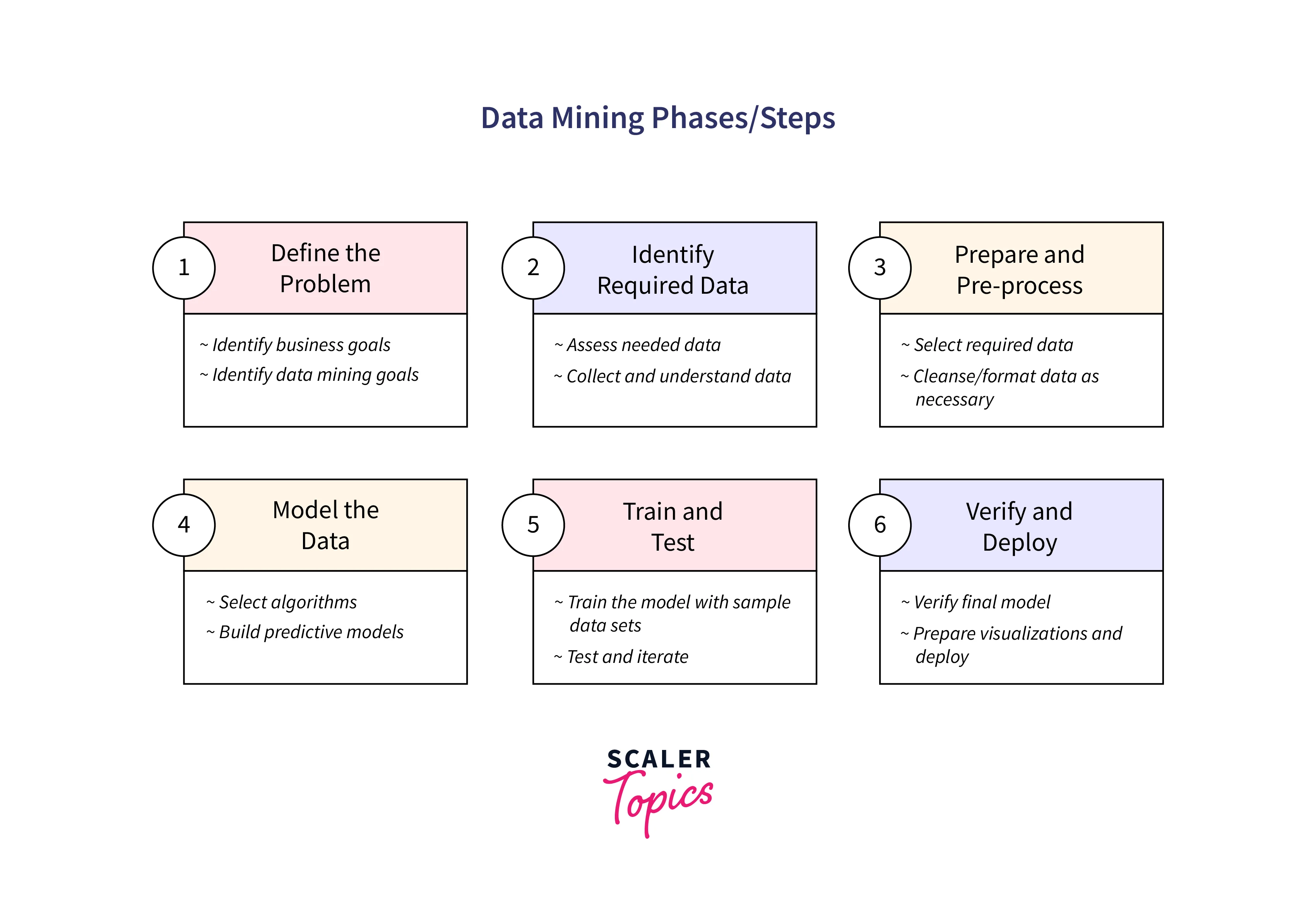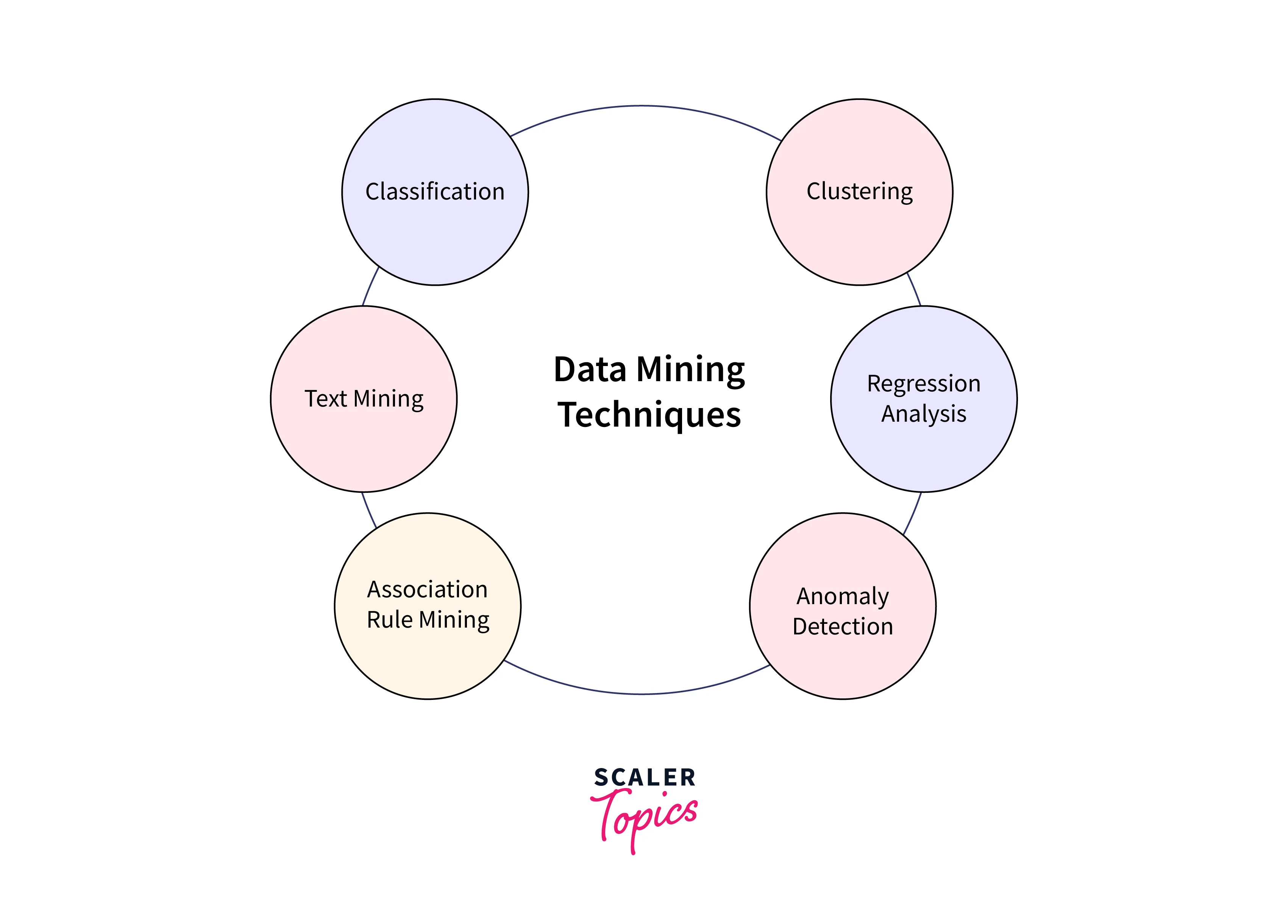What Is Data Mining?
Overview
Data mining is the process of discovering patterns and insights from large datasets. It involves the use of various statistical and machine-learning techniques to extract meaningful information from data. In this article, we will introduce data mining and answer the question, what is data mining? Data mining has become increasingly important in recent years as organizations have amassed large amounts of data that can be used to inform business decisions. By uncovering patterns and trends in this data, organizations can gain valuable insights into customer behavior, market trends, and other important factors that can inform business strategy.
By the end of this article, you will have a better understanding of various questions, such as what is data mining, what is data mining history, what is data mining process, what are data mining techniques, and why is data mining important.
Introduction to Data Mining
- Data mining is the process of extracting valuable insights and knowledge from large datasets. It is an interdisciplinary field that combines statistics, computer science, and domain expertise to discover hidden patterns and relationships within data.
- What is the data mining definition? In simple terms, data mining is the process of extracting knowledge from data. It involves using advanced algorithms and techniques to uncover patterns, correlations, and trends that are not easily discernible using traditional methods.
- Data mining has become an important tool for organizations of all sizes and across various industries. From healthcare and finance to marketing and retail, data mining is being used to improve decision-making, optimize business processes, and gain a competitive advantage.
- One of the key benefits of data mining is that it allows organizations to gain insights into their customers, products, and operations that would otherwise be very difficult or impossible to obtain. For example, data mining can be used to identify which customers are most likely to purchase a particular product, which products are most profitable, and which business processes can be optimized to reduce costs.
- Let’s explore data mining in detail in subsequent sections and try to understand answers to some questions, such as what is data mining, why it is important, what is data mining process, etc.
Data Mining History
Data mining has its roots in several different fields, including statistics, artificial intelligence, machine learning, and database systems. The term "data mining" was first coined in the 1990s, but the practice of data mining can be traced back much further. In the 1960s and 1970s, researchers in the field of statistics began to develop techniques for analyzing and modeling large datasets. This work laid the foundation for many data mining techniques today, such as regression analysis and cluster analysis.
In the 1980s, researchers in the field of artificial intelligence began to explore the use of machine learning algorithms for data analysis. These algorithms were designed to learn from data and make predictions based on that learning. This work laid the foundation for many of the machine-learning algorithms used in data mining today. The 1990s saw the emergence of data warehousing and the need for tools and techniques to extract insights from large datasets. The term "data mining" was coined during this time to describe the process of discovering patterns and insights from large datasets.
Since then, data mining has continued to evolve and grow, partly driven by advances in computing power, data storage, and machine learning algorithms. Today, data mining is used in a wide range of industries and applications, from marketing and finance to healthcare and scientific research.
Why is Data Mining Important?
Here are some of the reasons why data mining is important:
- Improved Decision Making:
By extracting insights and patterns from large datasets, data mining helps individuals and organizations make more informed decisions. This can lead to better business outcomes, more effective public policies, and improved scientific research. - Cost Reduction:
Data mining can help organizations identify cost-saving opportunities and improve operational efficiency. For example, data mining can be used to optimize supply chain management, reduce waste, and streamline production processes. - Competitive Advantage:
In today's data-driven economy, organizations that can mine and analyze data effectively have a competitive advantage over those that do not. By using data mining to identify patterns in customer behavior, market trends, and other areas, organizations can gain valuable insights that help them stay ahead of the competition. - Improved Customer Experience:
By analyzing customer data, organizations can gain a better understanding of customer needs and preferences and tailor products and services accordingly. This leads to a more personalized customer experience and can help build brand loyalty. - Fraud Detection:
Data mining can be used to identify fraudulent activities, such as credit card fraud, insurance fraud, and identity theft. By analyzing patterns in data, organizations can identify anomalies and flag potential fraud cases. - Scientific Research:
Data mining is increasingly being used in scientific research to analyze complex datasets and identify new relationships between variables. This has led to important discoveries in fields such as genetics, astronomy, and environmental science.
Data Mining Process
Below are the steps used in a typical data mining process:
- Problem Definition:
The first step in the data mining process is to define the problem that needs to be solved clearly. This involves identifying the business or research question that needs to be answered and defining the scope of the analysis. - Identifying Required Data:
Once the problem has been defined, the next step is to identify the data that is needed to answer the question. This involves identifying the data sources, the data format, and any data quality issues that need to be addressed. - Data Preparation and Pre-processing:
Once the required data has been identified, the next step is to prepare the data for mining. This involves cleaning and transforming the data, handling missing data, and creating new variables or features as needed. - Data Modelling:
The next step is to create a model that can be used to analyze the data and answer the questions. This involves selecting an appropriate machine learning algorithm, tuning the model parameters, and testing the model using a validation dataset. - Model Evaluation:
Once the model has been trained and tested, the next step is to evaluate its performance. This involves assessing the accuracy and effectiveness of the model, identifying any areas where the model can be improved, and deciding whether the model is suitable for deployment. - Model Deployment:
The final step in the data mining process is to deploy the model in a production environment. This involves integrating the model into existing business processes, creating user interfaces and reports to help stakeholders interpret the results, and monitoring the model's performance over time.

Types of Data Mining Techniques
Here are a few of the most commonly used data mining techniques:
- Classification:
Classification is a technique that categorizes data into predefined classes or groups. This involves training a machine learning model on a set of labeled data and then using the model to classify new, unlabeled data. - Clustering:
Clustering is a technique used to group similar data points based on their characteristics. This can be useful for identifying patterns or segments in the data or for identifying outliers or anomalies. - Association Rule Mining:
Association rule mining is a technique that is used to identify relationships between variables in a dataset. This involves identifying sets of items that frequently occur together, such as items commonly purchased in a retail setting. - Regression Analysis:
Regression analysis is a statistical technique that is used to identify relationships between variables in a dataset. This involves fitting a model to the data that can be used to predict the value of one variable based on the values of other variables. - Anomaly Detection:
Anomaly detection is a technique used to identify unusual or unexpected patterns in data. This can be useful for identifying fraudulent activity, network intrusions, or other types of abnormal behavior. - Text Mining:
Text mining is a technique used to extract information from unstructured text data. This involves using natural language processing techniques to identify patterns and relationships in text data, such as sentiment analysis or topic modeling.

Data Mining Software and Tools
- When selecting data mining software and tools, the sheer number of options available can make it difficult to choose a solution that meets the needs of all stakeholders. The complexity and diversity of tools and algorithms only add to the challenge. However, businesses that can implement a platform that meets their specific needs can gain the most value from data mining.
- To achieve this, organizations should select a platform that aligns with their industry or type of project, manages the entire data mining lifecycle, integrates with enterprise applications, and provides flexibility and collaboration tools through integration with open-source languages like R and Python.
- Additionally, the platform should be able to meet the needs of IT, data scientists, and analysts while also serving the reporting and visualization needs of business users.
- A few of the most commonly used data mining tools include RapidMiner, IBM SPSS Modeler, Talend, Tableau, SAS, etc.
Data Mining Applications
Here's an overview of some of the most common data mining applications across different industries:
- Marketing:
Data mining can be used to identify customer segments, predict customer behavior, and develop targeted marketing campaigns. Businesses can gain insights into customer preferences by analyzing customer data and developing more effective marketing strategies. - Fraud Detection:
Data mining can be used to identify fraudulent activity, such as credit card fraud, insurance fraud, and identity theft. By analyzing patterns in data, data mining algorithms can detect unusual behavior and alert organizations to potential fraud. - Healthcare:
Data mining can be used to analyze patient data, identify risk factors for diseases, and develop treatment plans. By analyzing large amounts of patient data, healthcare organizations can gain insights into patient health and improve the quality of care. - Finance:
Data mining can be used to analyze financial data, identify trends and patterns, and predict future market conditions. By analyzing financial data, businesses can gain insights into market conditions and make better investment decisions. - E-commerce:
Data mining can be used to analyze customer behavior, predict customer preferences, and develop targeted marketing campaigns. By analyzing customer data, e-commerce businesses can develop more effective marketing strategies and increase sales. - Manufacturing:
Data mining can be used in manufacturing to improve supply chain management, optimize production processes, and predict equipment failure.
Ready to dive into the world of data? Join our Data Science free course and unlock the secrets to harnessing the power of data.
Conclusion
- Data mining is the process of discovering patterns and insights in large datasets, and it has become an increasingly important tool for businesses and organizations of all types.
- The data mining process typically involves problem definition, identifying required data, data preparation and pre-processing, data modeling, model evaluation, and model deployment.
- There are several types of data mining techniques, including classification, clustering, regression, and association rule mining, and each has its strengths and weaknesses depending on the specific application.
- Finally, data mining software and tools are critical to the success of any data mining project. Businesses should carefully consider their specific needs when selecting a platform that aligns with their industry or type of project, manages the entire data mining lifecycle, and integrates with enterprise applications.
